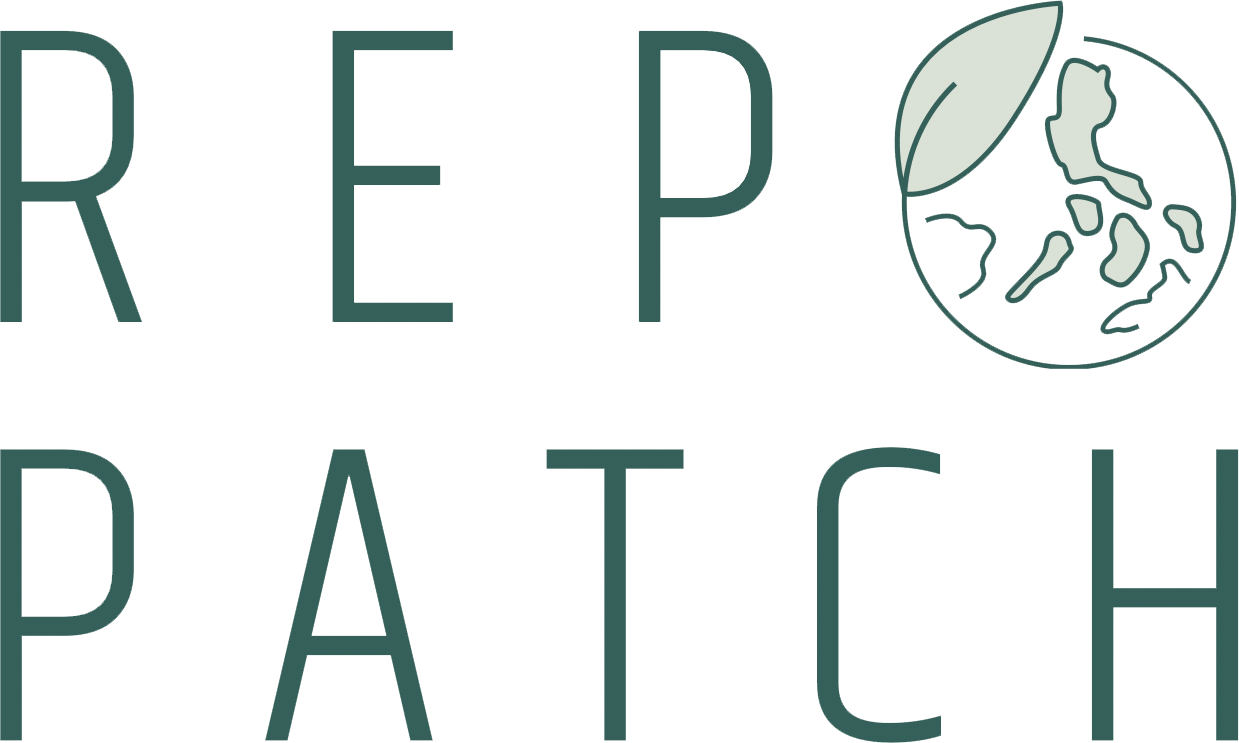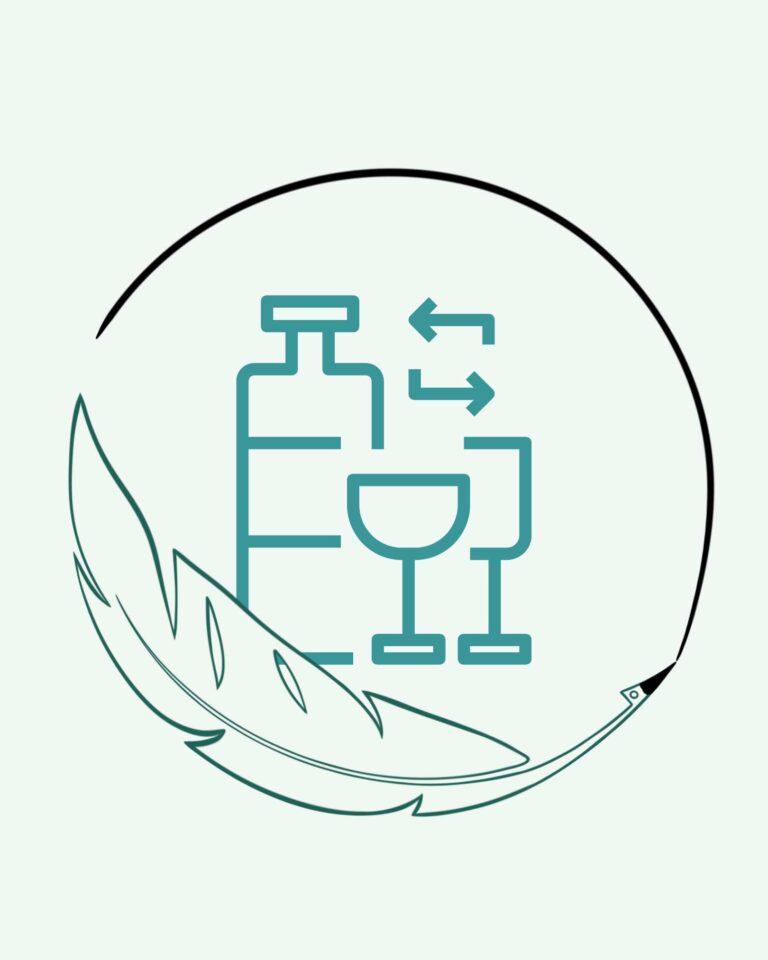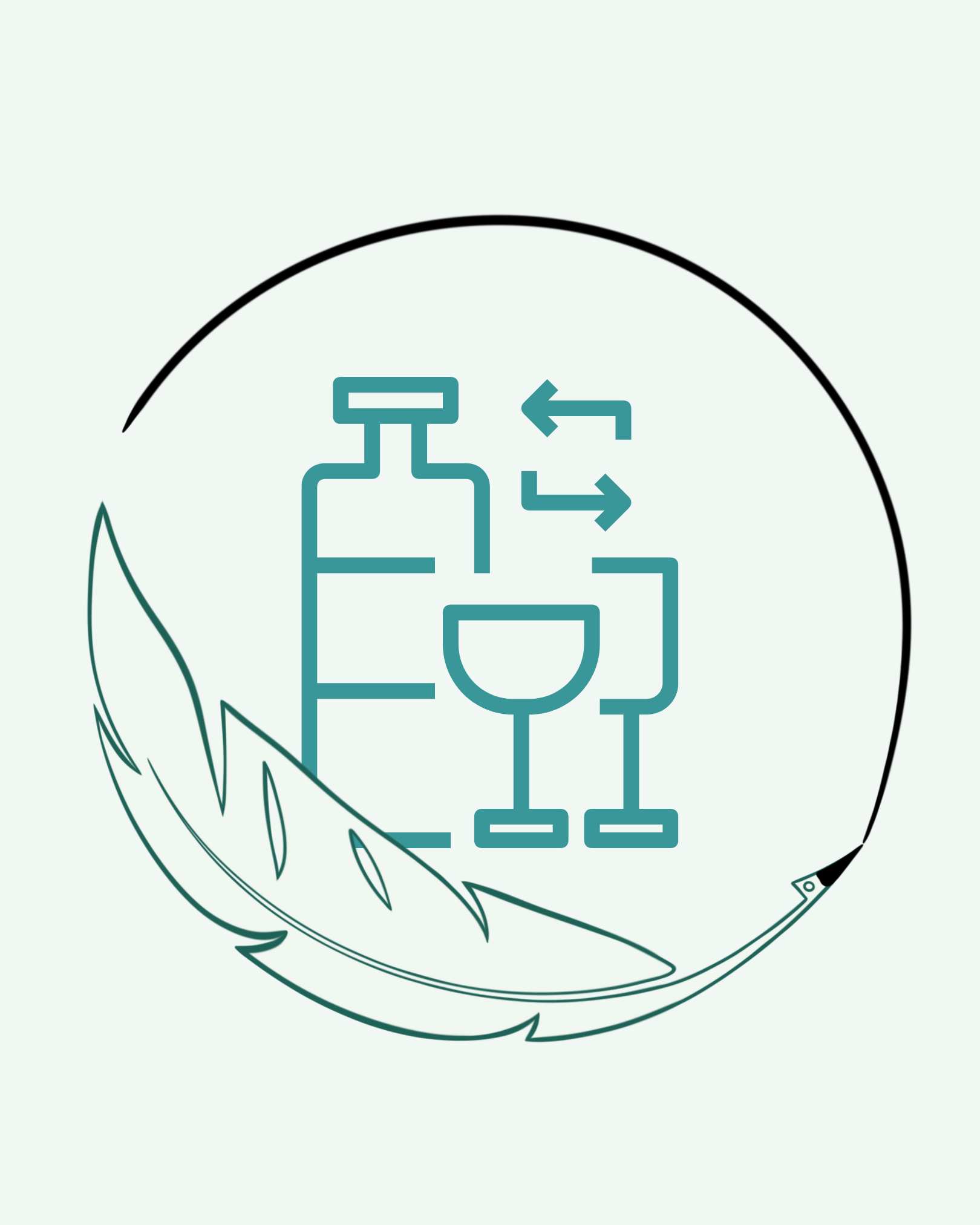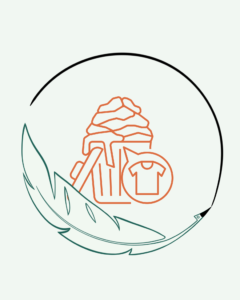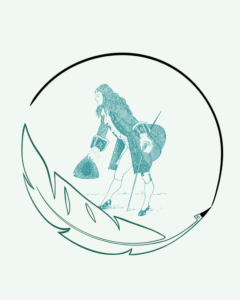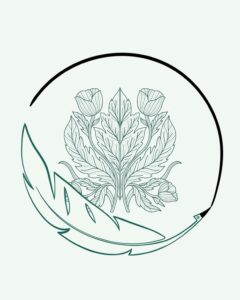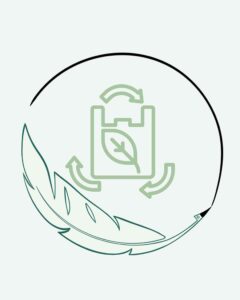Glass is in our lives, whether it’s a water bottle we’ve handled countless times, a wine bottle that accompanies the table, or the raw material for jars our mothers have kept for years. In fact, it’s one of the quietest yet most indispensable companions of our daily lives. Yet, we often view it as merely a commodity, throwing it away or putting it aside after use. Yet, it’s one of nature’s most special materials. It’s durable, healthy, and infinitely reusable.
Furthermore, it can be both recycled and upcycled. In this article, we’ll embark on a comprehensive journey, from the nature of glass to the energy consumption involved in its recycling, from the new meanings it gains through upcycling to examples from our Reppatch partners.
Its Nature and Origin
Glass is a naturally occurring material. Obsidian, formed by the rapid cooling of molten rock during volcanic eruptions, is actually nature’s own glass. People used this natural material thousands of years ago to make sharp tools. However, its artificial production dates back to 3500 BC in Mesopotamia and Egypt. At that time, it was used to make beads, ornaments, and small vessels. Over time, it spread throughout the world via trade routes. The transparent bottles, windows, and laboratory supplies we know today are the result of centuries of development.
The secret lies in a few seemingly simple but meticulously crafted raw materials: silica sand, soda ash, and limestone. Silica provides hardness and transparency, while soda facilitates melting at high temperatures. Limestone increases durability. Adding dolomite, feldspar, or recycled glass shards to this trio creates glass as we know it. All of these raw materials are naturally obtained and mined in large mines in most countries. This shows that the production process is actually energy and resource intensive.
The Invisible Cost of Recycling
Its non-biodegradability is both an advantage and a disadvantage. Left in the wild, it can persist for hundreds of years. This characteristic also makes it an excellent candidate for recycling. It can be recycled repeatedly without losing any of its quality. In other words, a bottle can be re-bottled many times, and its quality remains unchanged. This is a truly important detail, as recycling processes often significantly reduce the quality of the main material.
While the recycling process may seem simple, it actually requires significant energy consumption. First, waste is taken to collection centers. There, they are sorted by color, as mixing green, brown, and clear glass significantly reduces the quality of the new product. Caps, labels, and plastic parts are cleaned. The shards are then broken down into small pieces called “cullet.” This cullet is melted at high temperatures and recycled into new products.
The most critical issue here is energy. To produce from scratch, the raw materials are melted at temperatures above approximately 1500°C. Using recycled shards reduces this temperature, reducing energy consumption by 25% to 30%. So, recycling is an essential tool for protecting the environment. According to calculations, every 1,000 tons of glass recycled prevents approximately 314 tons of carbon dioxide emissions.* However, recycling still requires large furnaces, high temperatures, and energy-intensive processes.
Glass and Upcycling
Upcycling isn’t as large-scale as recycling, but its environmental impact is negligible compared to other methods. Upcycling means preserving its existing form without melting it, giving it a new function. In other words, a bottle doesn’t have to be a bottle again. With simple cutting and sanding techniques, it can be transformed into a glass, candle holder, flowerpot, or decorative object.
This process requires significantly less energy than recycling. The process is limited to cutting tools and sanding, minimizing environmental impact. Furthermore, upcycled products carry not only functional but also aesthetic value. A glass made from a wine bottle or a lamp fashioned from a liqueur bottle becomes an object that is both useful and has a story to tell.
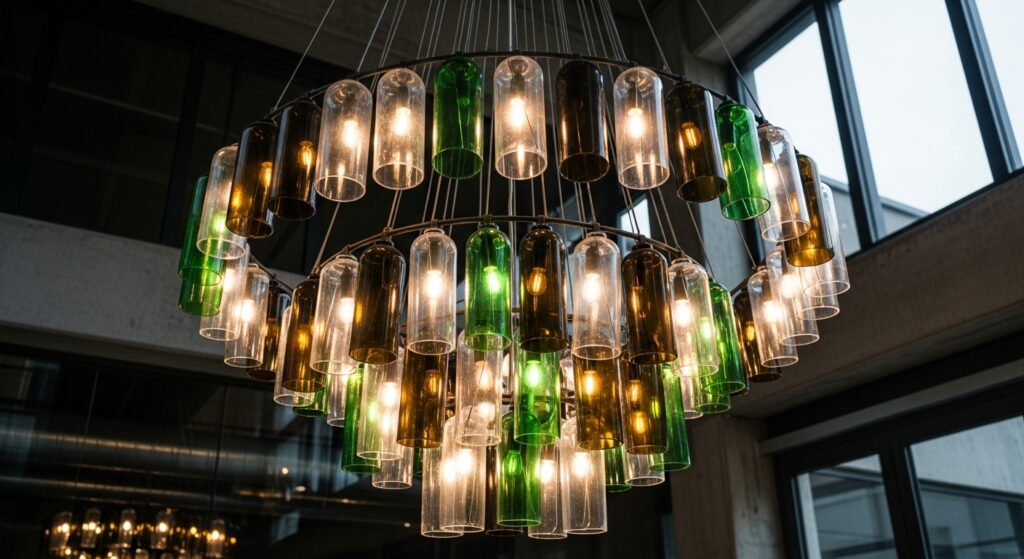
Glass Recycling in Turkey and the World
European Union countries are quite successful in glass recycling. Germany’s glass recycling rate exceeds 80%. Similar figures are seen in Scandinavian countries. This is primarily due to deposit systems. People return used bottles and receive a small fee in return. This allows a large portion of waste glass to be recycled.
In Turkey, the situation is somewhat different. While official figures are unclear, the recycling rate is estimated to be between 20% and 25%. This is well below the European average. However, Turkey is a strong glass producer. We have a major producer like Şişecam, and most of our raw materials are sourced domestically. However, unfortunately, there is still a long way to go when it comes to waste management and consumer awareness.
Reglasstic from Reppatch Partners
One of the best examples of upcycling comes from Reglasstic, one of our Reppatch partners. Reglasstic takes used bottles and brings them back to life. Using cutting and sanding techniques, the bottles are transformed into glasses, candle holders, and decorative objects.
Reglasstic’s work truly embodies what upcycling is all about. Instead of a bottle ending up in the trash, it becomes a glass in our kitchen or a candle holder in our home, shining brightly. This transformation involves no melting or high energy consumption. It’s all about creativity, effort, and a genuine belief in sustainability.
A Transparent Hope for the Future
Glass actually teaches us a profound lesson. Its non-degradability in nature demonstrates that it can be an opportunity, not a burden. Recycling enables large-scale energy savings. Upcycling creates creative products in small workshops. And we, the consumers, can be a part of this process by properly utilizing our waste.
At Reppatch, we believe that every waste carries a story. There’s a huge difference between throwing away a small glass bottle and upcycling it. The former represents a burden that will remain in the environment for centuries, while the latter represents a hope for a transparent future.
